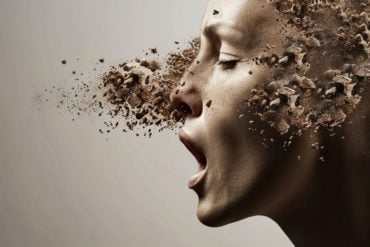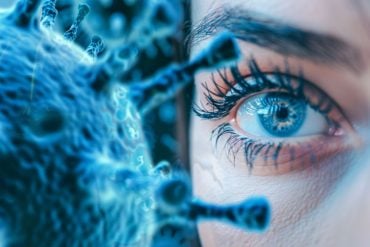Summary: Alcohol use disorder impacts 283 million individuals globally, with limited therapeutic options.
Researchers discovered a significant connection between the stress hormone, corticotropin-releasing factor (CRF), and alcohol-withdrawal headaches. CRF activates mast cells in the dura, triggering pain signals during alcohol withdrawal.
This groundbreaking discovery could pave the way for targeted drug therapies, potentially breaking the vicious cycle of addiction.
Key Facts:
- CRF, a stress hormone, plays a pivotal role in activating pain signals during alcohol withdrawal by binding to a specific mast cell receptor, MrgprB2.
- Mast cells, exclusive to the MrgprB2 receptor, are integral in alcohol-withdrawal headaches, causing dilation of blood vessels and sensitizing sensory neurons.
- Targeting the interaction between CRF and MrgprB2 could lead to new therapeutic strategies for alleviating pain during alcohol withdrawal.
Source: UT San Antonio
About 283 million people worldwide suffer from alcohol use disorder, a debilitating health challenge for which limited therapeutic options are available. The cost to society is estimated at greater than $2 trillion annually.
“People try to rehabilitate, but it is very challenging,” said Yu Shin Kim, Ph.D., a neuroscience researcher at The University of Texas Health Science Center at San Antonio.
“Headache is one of the severe withdrawal symptoms that pushes the rehabilitating patient back to alcohol, because people know that, after drinking, alcohol will actually reduce the headache. It becomes a vicious cycle. This is how they develop alcohol dependence.”

Kim, associate professor of oral and maxillofacial surgery in the health science center’s School of Dentistry, and colleagues found that a stress hormone called corticotropin-releasing factor (CRF) activates immune cells known as mast cells in the dura—the thin, transparent membrane under the skull.
Dura matter includes peripheral nerve fibers and peripheral blood vessels. CRF binds to a specific mast cell receptor called MrgprB2, Kim said. This is the central finding of the team’s study published Oct. 30 in the journal Neuron.
“After alcohol withdrawal, the CRF stress hormone is released from the hypothalamus, a brain region that controls many functions,” Kim said.
“The CRF travels through peripheral blood vessels to dura matter, where it is released from the vessels and binds to MrgprB2. This signals the mast cells to degranulate, or open, and secrete chemical messengers that induce functions including blood vessel dilation (widening).
“This also activates peripheral nerve fibers extending from trigeminal ganglia neurons, which are sensory neurons. That is how these neurons are sensitized and a person has alcohol-withdrawal headache.”
It is this process that sends the pain signals.
Researchers knew that peripheral neural fibers must be related to vessel dilation that occurs with alcohol withdrawal. The lab’s new contribution is that CRF binds to the mast cell receptor MrgprB2, Kim said.
“MrgprB2 is a very specific receptor for mast cells. Only mast cells have these receptors,” Kim said.
This research may benefit further studies of various substance use disorder mechanisms including withdrawal, he said. It may be possible to develop a small-molecule drug therapy to inhibit the CRF and MrgprB2 interaction, resulting in fewer pain signals during alcohol withdrawal.
About this AUD and hormone research news
Author: Yu Shin Kim
Source: UT San Antonio
Contact: Yu Shin Kim – UT San Antonio
Image: The image is credited to Neuroscience News
Original Research: Closed access.
“Mast cell-specific receptor mediates alcohol withdrawal-associated headache in male mice” by Yu Shin Kim et al. Neuron
Abstract
Mast cell-specific receptor mediates alcohol withdrawal-associated headache in male mice
Highlights
- Alcohol withdrawal causes headache behaviors, depending on the presence of MrgprB2
- Alcohol-withdrawal-induced sensitization of TG is absent in MrgprB2-lacking mice
- Mast cell degranulation by MrgprB2 in dura mater induces alcohol-withdrawal headache
- MrgprB2 receptor mediates the development of alcohol-withdrawal-associated headache
Summary
Rehabilitation from alcohol addiction or abuse is hampered by withdrawal symptoms including severe headaches, which often lead to rehabilitation failure.
There is no appropriate therapeutic option available for alcohol-withdrawal-induced headaches. Here, we show the role of the mast-cell-specific receptor MrgprB2 in the development of alcohol-withdrawal-induced headache.
Withdrawing alcohol from alcohol-acclimated mice induces headache behaviors, including facial allodynia, facial pain expressions, and reduced movement, which are symptoms often observed in humans. Those behaviors were absent in MrgprB2-deficient mice during alcohol withdrawal.
We observed in vivo spontaneous activation and hypersensitization of trigeminal ganglia (TG) neurons in alcohol-withdrawal WT mice, but not in alcohol-withdrawal MrgprB2-deficient mice. Increased mast cell degranulation by alcohol withdrawal in dura mater was dependent on the presence of MrgprB2.
The results indicate that alcohol withdrawal causes headache via MrgprB2 of mast cells in dura mater, suggesting that MrgprB2 is a potential target for treating alcohol-withdrawal-related headaches.






